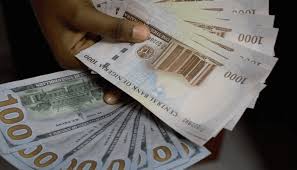The Nigerian naira appreciated against the US dollar across both official and parallel foreign exchange (FX) markets on Tuesday, July 2, 2025—the first trading day of the new month. This continued a recent trend of relative stability, buoyed by ongoing monetary and structural reforms targeted at strengthening foreign exchange inflows and unifying Nigeria’s FX system.
At the Nigerian Foreign Exchange Market (NFEM), the naira gained marginally by 14 kobo to close at ₦1,529.57 per US dollar, compared to ₦1,529.71 on Monday. This modest gain, according to data published by the Central Bank of Nigeria (CBN), reflects steady liquidity improvements and renewed confidence among market participants.
In the parallel market, popularly referred to as the black market, the naira gained ₦10 to close at ₦1,560 per dollar, a 0.6 percent appreciation from the previous day’s ₦1,570. Market watchers attributed the gain to increased dollar supply from informal channels and speculative sellers taking profits.
Analysts at Access Bank reported that dollar supply surged in the FX market last week, supported by stronger participation from Foreign Portfolio Investors (FPIs). The bank’s data indicated that the naira appreciated by ₦6.43 during the week, closing at ₦1,545.20 per dollar. Improved sell-side pressure and renewed investor confidence were credited for easing demand strain on the naira.
Looking ahead, Access Bank analysts said sustained foreign portfolio inflows, coupled with consistent policy direction from the Central Bank, could help maintain downward pressure on the exchange rate in the near term. However, they cautioned that maintaining momentum would require continued macroeconomic stability, fiscal discipline, and deeper coordination between the CBN and fiscal authorities.
While Nigeria’s FX market appears to be enjoying a period of cautious optimism, recent reports from Afreximbank and other financial sources paint a more sobering picture of Africa’s broader currency landscape. The naira was recorded as the worst-performing currency on the continent between 2023 and 2024, falling by 131.8 percent—from ₦636.13 to ₦1,474.60 per dollar. The steep decline followed the CBN’s decision to float the naira in mid-2023 as part of its foreign exchange reform strategy aimed at unifying multiple exchange rates and attracting foreign investment.
South Sudan’s pound ranked just behind the naira in terms of depreciation, falling by 131.1 percent from 930.33 to 2,150.00 per dollar. The sharp fall is attributed to internal conflict, fiscal instability, and disruptions in oil exports, which remain the country’s major foreign exchange earner.
Zimbabwe’s currency, long known for its volatility, depreciated by 55.6 percent from 3,509.17 to 5,460.00 per dollar in 2024, despite efforts to stabilise the economy through monetary reform and dollarisation policies. This came after an 835.9 percent depreciation in 2023, highlighting the country’s continued struggle with hyperinflation and low public confidence in its monetary framework.
Malawi, Ethiopia, and Egypt also witnessed sharp currency declines of 53.7 percent, 51.7 percent, and 47.9 percent respectively in 2024. These were driven by rising debt burdens, subsidy cuts, and structural reforms linked to International Monetary Fund (IMF) support programs.
Ghana’s cedi lost 28.6 percent of its value in 2024. This followed several years of financial stress, stemming from balance-of-payment deficits, slow revenue mobilisation, and high interest payments. Ghana’s economic managers continue to push for debt restructuring and reforms under the watch of the IMF.
Angola and Zambia, both oil- and mineral-dependent economies, also saw their currencies decline significantly in 2024. The Angolan kwanza dropped by 27 percent while the Zambian kwacha weakened by 29.4 percent. Market analysts have pointed to low export earnings, foreign reserve depletion, and volatile commodity prices as major contributors to their respective currency woes.
Despite Nigeria’s improved short-term outlook, the effects of past volatility continue to cast a long shadow. Inflation, still above 20 percent as of May 2025, remains a pressing challenge for both households and businesses. Analysts have warned that any delay in FX reforms, uncertainty around government borrowing, or inconsistency in policy signals could reverse the gains seen in recent weeks.
The Central Bank of Nigeria has reiterated its commitment to maintaining a flexible exchange rate system, ensuring FX liquidity, and attracting more long-term investment. However, economists note that stronger fiscal coordination, structural reforms, and better oil production performance are still needed to ensure the naira’s resilience over the long term.
